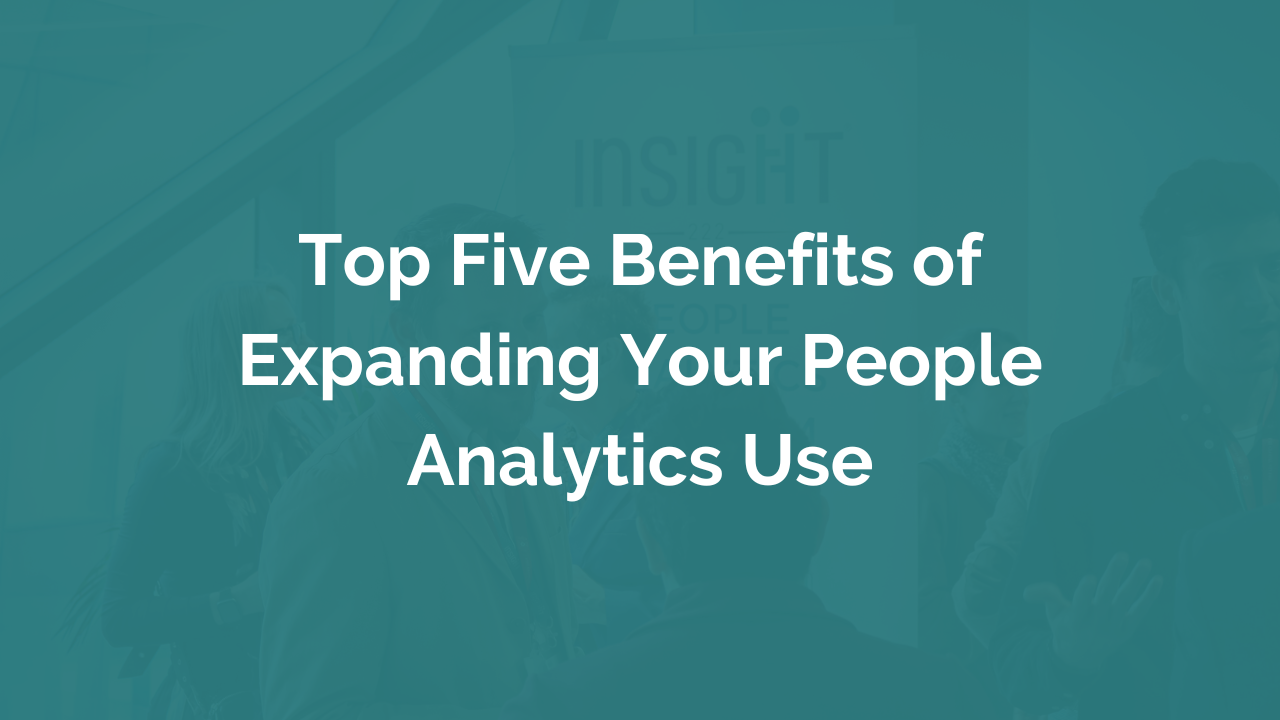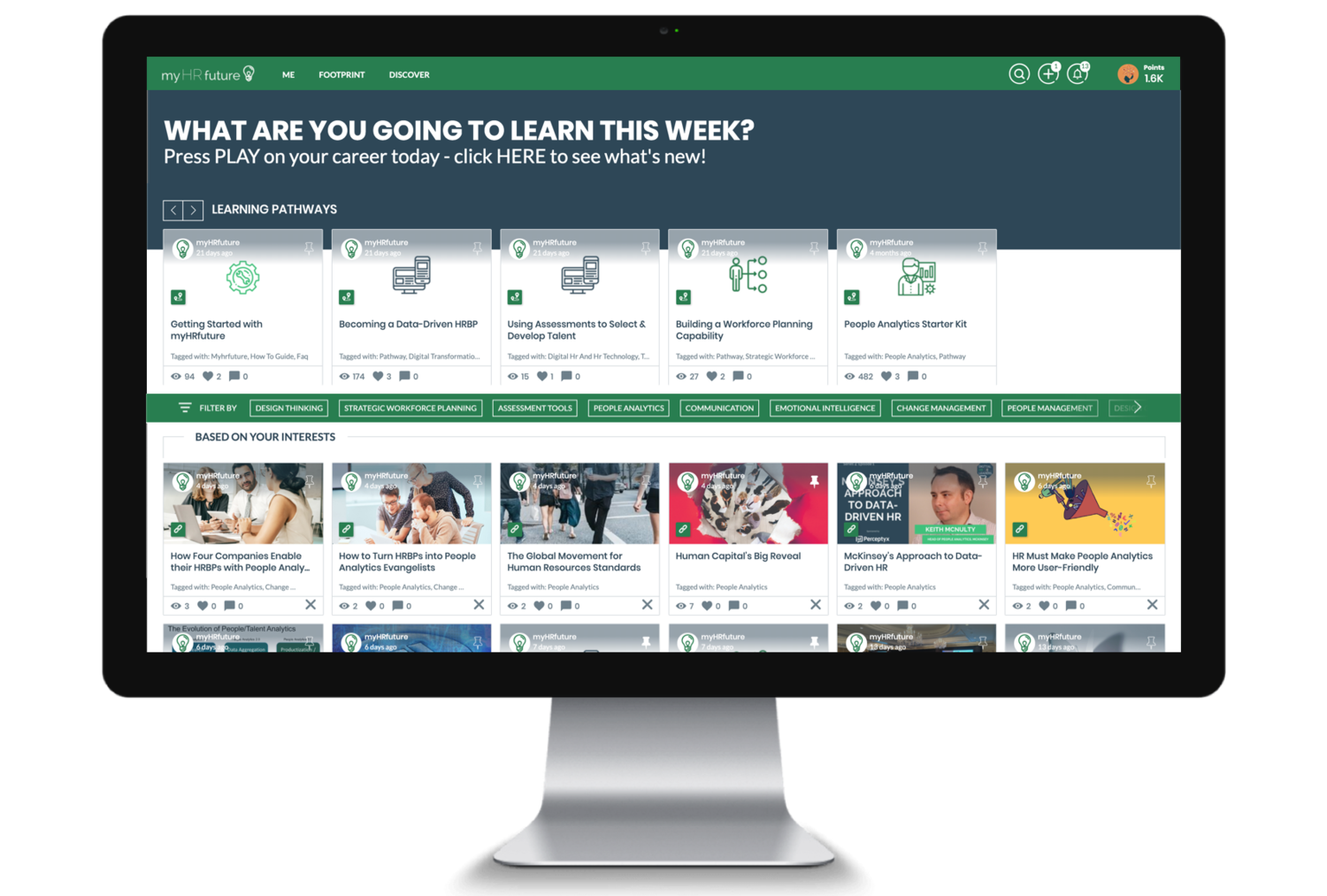Five Top Benefits for Expanding Your People Analytics Use
Attrition rates are up, productivity is low, and recruitment costs are soaring. These are just some challenges HR faces in today's ever-changing business landscape. Thankfully, there is a way to tackle these issues head-on and deliver more business value: people analytics.
Figure. 7, Source: (Insight222 People Analytics Trends Report 2022)
As we have heard from many of our guests on the Digital HR Leaders podcast, the power of people analytics is turning the tide and optimising workforces with predictive analytics, HR metrics, and people analytics tools, revolutionising how organisations manage their employees. Our 2022 People Analytics Trends report also found that year on year, leading companies are investing more in their people analytics functions, with 65% of companies surveyed confirming an increase in size in their people analytics function in 2022 (see Figure. 7).
This comes as no surprise, as people analytics gives rise to the opportunity to find evidence-based solutions based on an organisation's unique data to predict employee behaviour, uncover turnover trends, identify skills gaps, and optimise recruitment processes.
People analytics is unlocking a whole new level of HR efficiency and effectiveness for organisations.
Benefits Of Expanding People Analytics Use
Research conducted by a leadership consulting organisation, DDI, found that leading organisations in people analytics are 3.1 times more likely to outperform their peers. Additionally, a report by Deloitte and Visier also found that 70% of executives surveyed said that with advanced people analytics, they could make better decisions faster.
Employing a data-driven HR strategy that utilises people analytics presents a wealth of opportunities. Here are just some of the key benefits that you can unlock with people analytics:
Improved Employee Experience
People analytics helps human resources teams understand their employees' needs, wants, and challenges. It increases access to contextually rich data that allows employers to gain insight into the effectiveness of the people initiatives and overall HR strategy, benefits packages and more.
In the words of Laura Stevens, Vice President of Global Strategy, Analytics and Employee Experience at DSM:
"We know that employee experience is personal, it is subjective, and so this is about connecting and understanding to what matters most to our people. And so, by definition, that starts from listening, from research, from analytics, not from assumptions. So, therefore, employee listening and analytics, for me, are really the lifeblood of employee experience efforts."
In short, people analytics can help HR teams make data-driven decisions about creating the best employee experience for their people.
Greater Productivity
Have you ever wondered why teams exhibit greater productivity at certain times of the year? With predictive analytics, HR and people managers can use historical data analysis such as employee time tracking, project progress and seasonal trends to identify patterns in their workforce, uncovering the underlying cause of productivity and understanding which processes are most effective. Understanding the patterns within the organisation can then be used to optimise performance overall and inform better HR practices.
Promotes Diversity and Inclusion
As Ivori Johnson, Director of DEIB at Charthop, perfectly put it during her discussion with David Green on the Digital HR Leaders podcast:
"In order to see the true gaps and disparities across different diversity dimensions, but also just across the organisation, from different department levels, we have to be able to use the data to really help build a foundation of what's actually happening. Then we can add in the qualitative data and any anecdotal data to just really understand what the true picture is.
So, I can look at all of our people data; I can overlay that with race, sexual orientation, gender, gender identity, so many different things, and look at intersections of data to see where the gaps are per team, per department."
People analytics allows us to go beyond what is seen on the surface and get to the root of where potential issues in diversity, equity and inclusion may exist. It also encourages organisations to implement data-driven HR solutions to foster more significant equity within their existing teams and throughout the hiring process.
Impacts Retention
Despite announcements of global economic slowdowns, HR professionals will always prioritise retention. Though, with the power of predictive analytics and proactively identifying the most critical factors that contribute to employee retention, such as job satisfaction and engagement, organisations can use HR insights to inform retention strategies tailored to their employees' individual needs.
Plan for the Future with Workforce Planning
Workforce planning is a complex task requiring HR departments to forecast their future needs and react quickly in a rapidly changing business landscape.
But workforce planning isn't just a one-time event. As Abdul Hummaida, Chief Technology Officer at orgvue, explains on the Digital HR Leaders podcast:
"planning is important, but the monitoring of that plan and the replanning on a regular basis is a crucial element."
This is where people analytics can come in. With predictive analytics, HR teams can identify and analyse patterns in their existing workforce as well as external data sources - such as market trends and economic indicators - to continuously plan for the future with confidence.
And we dive into a skills-based approach to strategic workforce planning with the help of people analytics. In that case, organisations can even evaluate their workforce's current and future skills requirements to align them with the future of their business.
Interested in learning more about translating data and analytics into compelling stories that will drive action and change? Take a look at our How to Use Storytelling for People Analytics myHRfuture Academy Course.
How To Expand The Use Of People Analytics
Now that we've discussed some of the critical benefits of people analytics let's talk about practical ways to expand your HR data use. Here are some of the ways that leading companies in people analytics are getting the most out of their HR Analytics:
Create a Data-driven HR Culture
Organisations need to create a data-driven culture to maximise the potential of people analytics truly. HR teams must be empowered to utilise HR metrics for decision-making, and leaders must understand the importance of HR data in driving strategic business decisions. To do this, HR professionals must feel confident in collecting, analysing and reporting on HR data. An excellent way to better understand how to collect and analyse HR data is through people analytics courses. But it also means producing people analytics into a scalable tool that internal stakeholders can use throughout the company.
Invest in a People Analytics Team
According to our research, Leading Companies in people analytics invest in three key skills: people analytics consultants, data scientists, and behavioural scientists (see Figure. 2). These skills can be outsourced externally or developed internally by investing in the necessary training and people analytics courses to upskill existing HR employees.
At MyHRFuture Academy, we provide a range of people analytics courses designed specifically for HR teams looking to develop their digital and analytical skills.
Take Advantage of People Analytics Tools
Many HR analytics solutions on the market can help you scale people analytics use; however, when selecting the right tool, it's essential to consider the business goals to be achieved, as well as the level of sophistication needed to meet them.
For instance, HR systems of records are great for reporting and creating dashboards on HR metrics. Investing in more bespoke people analytics tools designed specifically for organisational design and strategic workforce planning may be more suitable for organisational design and strategic workforce planning.
Create an Operating Model for People Analytics
As people analytics use and teams scale, setting up an operating model that outlines the purpose, process and governance of people analytics use throughout the organisation is essential. In his article, Ian Ballie breaks the various operating models into three engines:
Demand Engine: Where the consulting team engages with the stakeholders to understand the business goals and challenges;
Solution Engine: This is where the Advanced Analytics, Reporting & Enablement, and Governance teams manage and produce analytic solutions;
Product Engine: Where the implementation team ensure the effective design and product management of analytics solutions.
Future-Proofing HR with People Analytics
The expansion of people analytics use can be a game-changer for HR teams. From aligning HR strategies with business objectives to identifying workforce trends and predicting the organisation's future - HR can use data innovatively to solve their most pressing problems, make smarter decisions and drive organisational growth.
And while HR data and analytics can be intimidating, myHRfuture Academy, an immersive learning experience that offers online HR courses led by experts and practitioners, provides HR professionals with all the tools they need to understand HR metrics, evaluate people analytics solutions and implement HR strategies in line with company objectives.
With our range of people analytics courses, we help HR teams such as Deloitte, Syngenta, ING, and many others upskill and leverage HR data to make meaningful HR decisions and drive HR strategies into the future.
So, if you're ready to empower your HR department and take HR analytics to the next level, get in touch with myHRfuture Academy today and join some of the top HR teams in the world in unlocking HR data potential and creating a tangible business impact.
Build the skills you need for success with myHRfuture!
We help individuals and organisations reinvent learning. Our learning programs support HR Business Partners to build the skills they need to effectively use analytics in HR to have data driven conversations with the business that drive actionable outcomes. The Data Driven HR Fundamentals certification is a collection of 6 on-demand, video based training courses that can be completed within a 12 month period, at your own pace. This certification program is designed to support you and your team build their skills in analytical thinking, data analytics and storytelling. By completing this learning program you will learn how to better interpret HR data and be confident in having data driven conversations with the business, that drive actionable outcomes.









